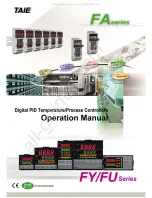
38
Rockwell Automation Publication 1789-UM002K-EN-P - January 2015
Chapter 2
What is the SoftLogix System?
How the SoftLogix System
Uses Connections
The SoftLogix system uses a connection to establish a communication link
between two devices. Connections can be any of the following:
•
Controller to local I/O modules or local communication modules
•
Controller to remote I/O or remote communication modules
•
Controller to remote I/O (rack-optimized) modules
•
Produced and consumed tags
•
Messages
You indirectly determine the number of connections the controller uses by
configuring the controller to communicate with other devices in the system.
Connections are allocations of resources that provide more reliable
communication between devices than unconnected messages.
Connections for Produced
and Consumed Tags
The SoftLogix controller supports the ability to produce (multicast) and
consume (receive) system-shared tags. System-shared data is accessible by
multiple controllers over an EtherNet/IP network. Produced and consumed tags
each require scheduled connections.
The SoftLogix controller supports a maximum of 127 consumed connections.
For two controllers to share produced or consumed tags, both controllers must be
attached to the same network. You cannot bridge produced and consumed tags
between two networks.
Tag Type
Required Connection
Produced
By default, a produced tag allows two other controllers to consume the tag, which means that as
many as two controllers can simultaneously receive the tag data. The local controller (producing)
must have one connection for the produced tag and the first consumer and one more connection
for each additional consumer (heartbeat). The default produced tag requires two connections.
As you increase the number of controllers that can consume a produced tag, you also reduce the
number of connections the controller has available for other operations, like communication
and I/O.
Consumed
Each consumed tag requires one connection for the controller that is consuming the tag.
















































